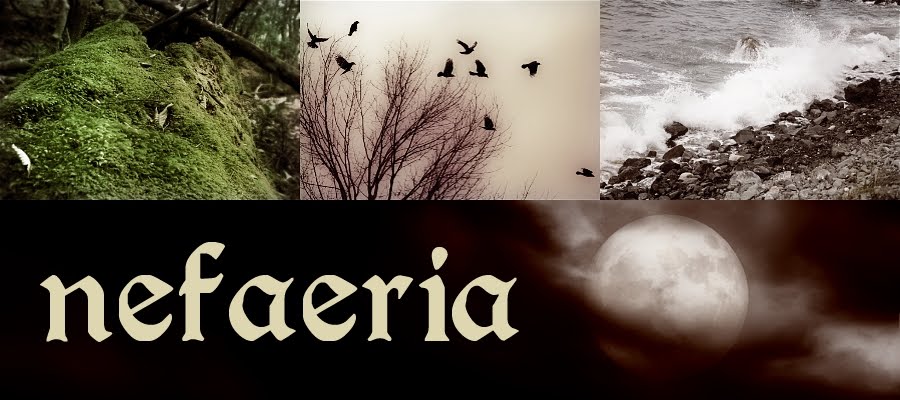
Other Names: Wild Baby's Breath, Master of the Woods, Wuderove, Muge-de-boys
Description: Sweet Woodruff is a beautiful woodland perennial that is native to Europe, as well as some parts of Asia and Northern Africa. This herb has whorls of 6 to 9 lanceolate leaves, and has pretty white flowers that show up from May sometimes right up until September.
It could be described as a ground cover, as it has a tendency to spread out, and not grow very tall; I don't think I have ever seen Sweet Woodruff over one foot tall. But, I have heard it reported that it can apparently grow to almost two feet (I can't remember the source off hand, so take it with a grain of salt.)
Warnings: As with all herbs, one should make sure to be thoroughly informed before ingesting them, and is best to do so under the guidance of a qualified healer.
Although it is not fully agreed within the herbalist and scientific communities, there are potentially nasty side effects when Sweet Woodruff is ingested. According to Healthonline.com, it can cause 'headaches, mind-altering effects, vertigo, somolence, central paralysis apnea, or coma when consumed in high doses.'
Healthonline also warns that it can increase the risk of bleeding, so caution needs to be used for those with bleeding disorders, or those who are on medication that can increase bleeding. As well, they discourage the use of this herb for those with psychiatric conditions, and recommend that pregnant and breastfeeding mothers not to ingest it at all.
Cultivating: This is a very fast-growing shade plant that makes an excellent ground cover, and can be grown as an under planting to group with other shade loving plants. If you don't want it taking over the garden, it can be planted in pots that are buried in the ground, and I have found that it grows well in containers by itself.
Sweet Woodruff is hardy to a zone 3, and can be grown easily by seed or you can buy already grown plants, which should be planted in the spring before the weather gets too hot. It does best in rich and moist, well-drained soil with a slightly acid pH, around 5.0. Although it does best in shade, you can plant this herb where it gets a little bit of filtered sunlight and it should be alright.
If you are wishing to harvest the herb, it is best done after it blooms, and the branches can be tied together and hung in a dark and warm place to dry.

Medicinal/Remedial Properties and Lore: Anitspasmodic, cardiac, diaphoretic, diuretic, homeopathy, sedative, tonic.
Sweet Woodruff was used widely in the Middle Ages for various ailments, including applying fresh leaves of wounds, and taken internally for liver and digestive problems, and to calm nerves.
Gerard said that this herb was 'good for the heart and liver, it prevaileth in wounds, as Cruciata and other vulnerary herbs do.'
Today it is used in treatment for blood clots, biliary obstruction, hepatitis, varicose veins, and insomnia.
Magical Properties and Lore: Sweet Woodruff is associated with protection, victory, money, and male sexuality.
It was once used by Catholics, hung in cathedrals and churches to ward off evil. According to Mrs. Greive's A Modern Herbal, Sweet Woodruff was 'hung and strewn in churches, and St. Barnabas Day and on St. Peter's, bunches of box, Woodruff, lavender and roses found a place there.'
This is a wonderful herb to incorporate into Bealtaine celebrations by wearing the leaves, or decorating the sacred space with sprigs of the leaves and flowers, or by adding it to wreaths.
In Rodale's Illustrated Encyclopedia of Herbs it is said that this herb was used in Germany to flavour May wine to celebrate the coming of spring, a tradition that dates back to the 1200's.
Sweet Woodruff can be used in rituals that honour Gods associated with the woodland, such as Herne and Cernunnos, and used in spells to stir male sexuality.
Other Uses: Many agree that Sweet Woodruff is safe to ingest in some alcoholic beverages, such as traditional May Wine (click for some recipes).
It is also reported to be an excellent insect repellent, and when dried, smells like fresh hay, so it is lovely as a potpourri. In some parts of Europe, it was used to stuff winter mattresses and cast along floors of households for these very reasons.
Sláinte!
Laurel

Photo by Christopher Schlosser

No comments:
Post a Comment